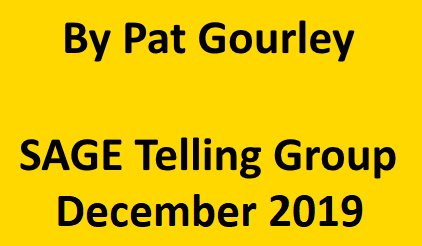
I assume that this topic refers to the use most often of questions to get a conversation started i.e. Ice Breakers. For me, though I initially took it quite literally and it conjured up childhood memories of breaking the overnight ice that had formed on water tanks we used for our cattle. This was of course a chore we would engage in several times a day during the often very cold northern Midwest winters. For some reason, I have no recollection of helping our pigs and chickens get water though I am sure we aided them in some way too since I have no memory of pigs and chickens dying from dehydration.
If you research “Ice Breakers” online there are many lists of questions one could use in a variety of settings. As I thought further on the topic though I was drawn to the possibility of non-verbal icebreakers. Think about it. If you run into someone wearing a red MAGA hat or a woman wearing a pink knitted cap all sorts of ice could be broken if you chose to engage. Depending on your worldview running into either of these forms of headgear could elicit a friendly smile and conversation or it might result in turning and running in the opposite direction. I suppose also a fistfight might ensue.
Gay men engaged in a great form of non-verbal icebreaking primarily in the 1970s through the infamous hanky/bandana codes. That is a variously colored hanky usually a bandana would be worn in either the left or right back pocket most often in denim jeans. The left side meaning active or dominant for a particular sex act and the right being passive. The occasional reality of the “power bottom” would have to be sorted later. The hankies were an expansion on the wearing of keys either right or left, which denoted left top or right bottom with the truly flexible wearing them on the middle back loop halfway between right and left.
The various colored hankies greatly delineated just what one was looking for. Though bathhouse sex was a ubiquitous form of sexual expression in the 1970’s it did not lend itself to hankies since folks in the bathhouse were naked except for a towel. There were other forms of nonverbal communication at the bathes such as the use of glory holes, slings, or having a room and lying on your belly door open – no hankies needed.
The hanky codes expanded to several dozen different colors but really how could one keep it all straight. Being a bathhouse maven myself I never got into the hankies that lent themselves more to bar or street cruising. There were a few colors though that were most common and many gay men were aware of their meanings. For example and remember left or right active or passive were always in play: deep blue was for anal sex top or bottom, light blue was oral sex giving or receiving, yellow water sports, red fisting, black S/M, etc., etc. And of course, we can’t forget orange, which meant, “anything goes”. This was of course decades before the orange one became president with “anything goes” taking on a whole new and dire meaning.
For gay men especially I would say that this sort of icebreaking, the hanky codes, was a unique form of communication and ultimately community building.
The origin of the hanky codes for gay men appears to most likely be the leather and BDSM cultures in NYC in the early seventies or perhaps in San Francisco around the same time.
Prior to hankies, as mentioned above, keys were worn on one’s belt loops either right or left. Apparently, the hankies were added to further narrow the desired possibilities and therefore saving even more time in the pursuit of the type of desired sex play.
Going back even further to the 19th century red and blue bandanas were worn usually around the neck for the purpose of delineating gender roles when square dancing with blue being the male and red being the female. In this era of gender fluidity, the politically correct firestorm that such behavior would generate today is truly scary and one wonders how many hours of the process would be needed to sort it all out. It kind of makes one long for a simpler though perhaps less “woke” time.
